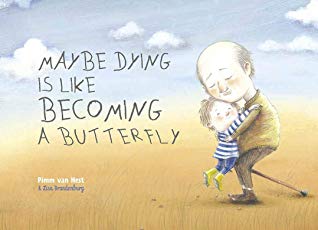Goodbye, Friend! Hello, Friend!
by Cori Doerrfeld
Date: 2019
Publisher: Dial Books
Reading level: C
Book type: picture book
Pages: 40
Format: e-book
Source: library
From the creator of The Rabbit Listened comes a gentle story about the difficulty of change . . . and the wonder that new beginnings can bring.
Change and transitions are hard, but Goodbye, Friend! Hello, Friend! demonstrates how, when one experience ends, it opens the door for another to begin. It follows two best friends as they say goodbye to snowmen, and hello to stomping in puddles. They say goodbye to long walks, butterflies, and the sun...and hello to long evening talks, fireflies, and the stars. But the hardest goodbye of all comes when one of the friends has to move away. Feeling alone isn't easy, and sometimes new beginnings take time. But even the hardest days come to an end, and you never know what tomorrow will bring.
(synopsis from Goodreads)
Cori Doerrfeld seems to be able to effortlessly depict complex emotional issues and convey deep meaning in her stories. And I never really feel like I'm reading an "issues" book.
In The Rabbit Listened, we saw a child trying to deal with their emotions with advice from a variety of animals (except the rabbit, who--as the title suggests--simply listened). In Goodbye, Friend! Hello, Friend!, the subject is endings and beginnings, represented by the words "goodbye" and "hello", respectively. The friendship of two little kids, Stella and Charlie, is the basis for exploring these concepts. When something ends, something new always begins. And even when a particular ending might feel final, there's always something new to pop up in its place. Various scenarios--from the changing of the seasons to the death of a pet--are explored in an easy-to-understand way. The pictures, done in much same style as in The Rabbit Listened, are detailed and appealing.
This is another lovely book from Doerrfeld. I can't wait to see what she comes up with next!
Quotable moment:
Premise: 5/5
Meter: n/a
Writing: 4/5
Illustrations: 4/5
Originality: 5/5
Enjoyment: 4/5
Overall: 4.33 out of 5




































